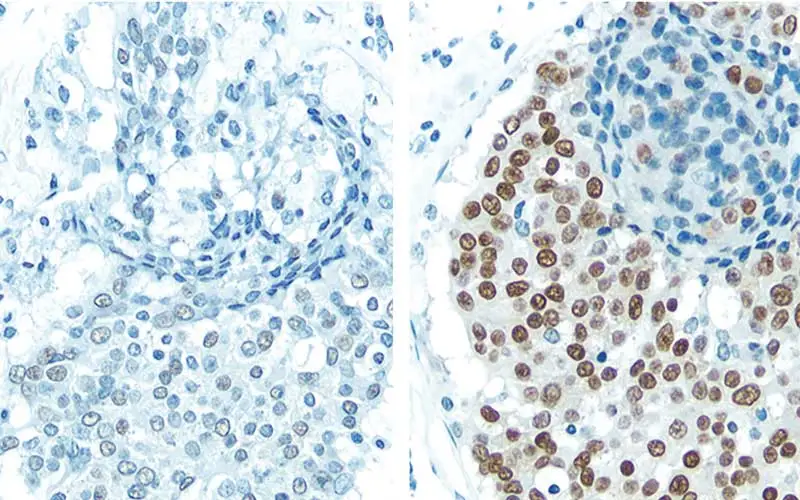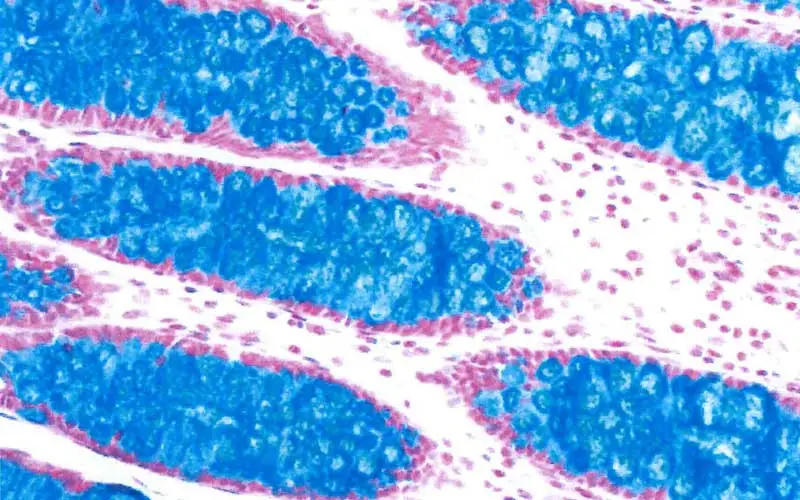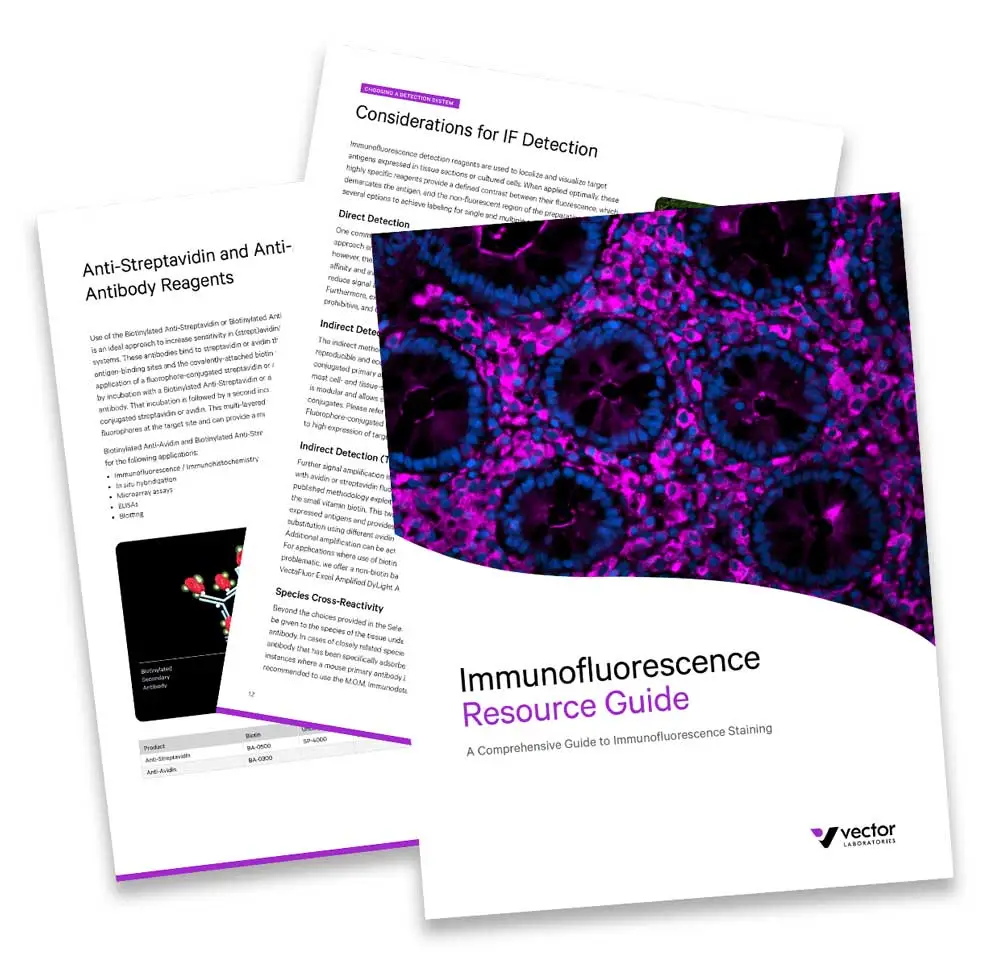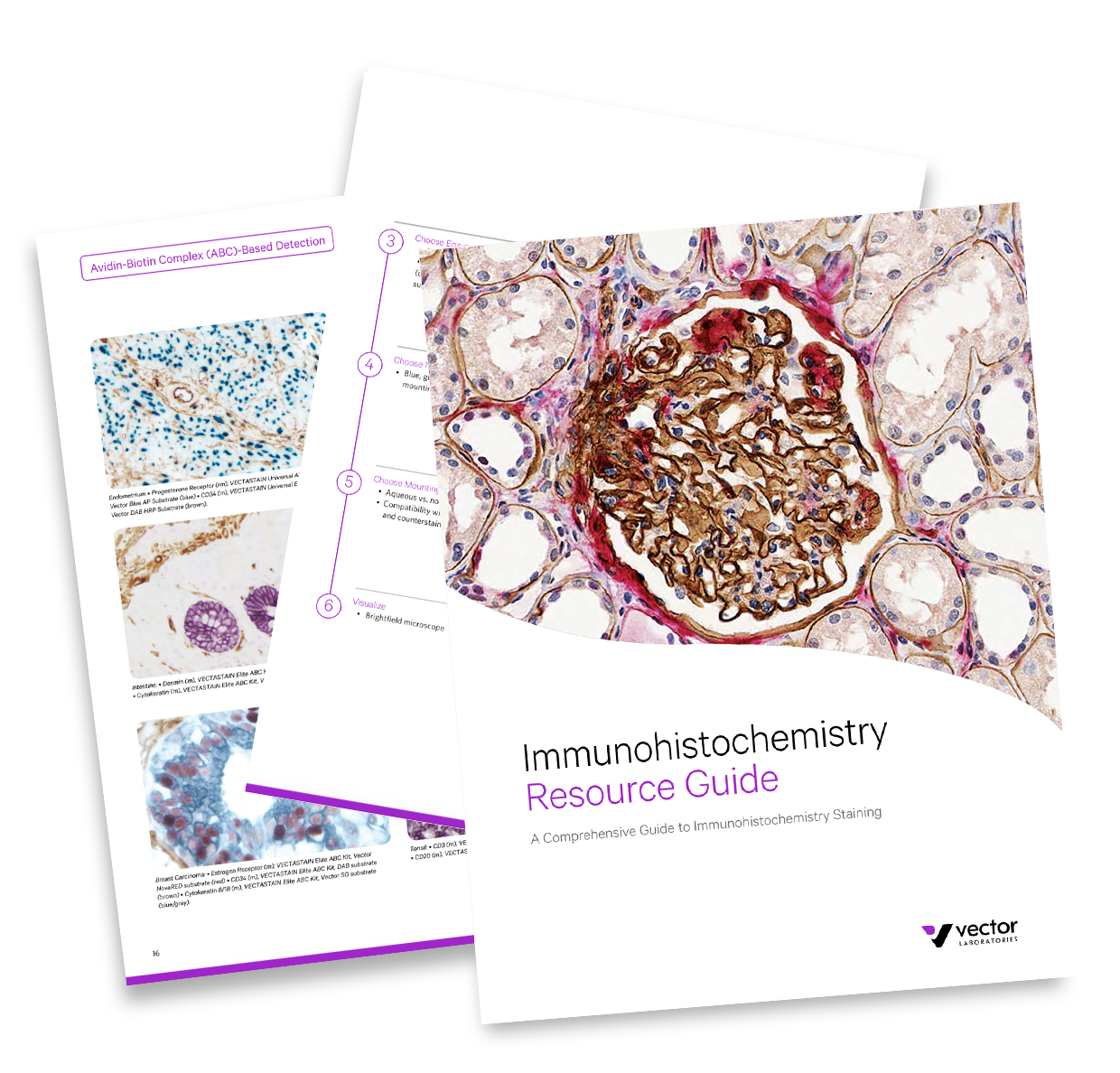Product Categories
Histology Reagents
Reagents, stains, and counterstains for optimum visualization of biomarkers and tissue morphology
Vector Laboratories offers you a range of useful histology reagents to complement and optimize your immunohistochemistry (IHC), immunocytochemistry (ICC), and immunofluorescence (IF) experiments.
Choose among the following groups of histology reagents/products:
- Antigen retrieval (unmasking) reagents — retrieve antigens in formalin-fixed, paraffin-embedded tissue sections (in combination with a high temperature treatment) for improved immunolabeling
- Counterstains and special stains — stain cell nuclei, cytoplasm, and other cellular components to better visualize tissue morphology
- Slide preparation products — simplify slide preparation in IHC, ICC, and IF applications; products include the ImmEdge® Hydrophobic Barrier PAP Pen, histology pens, and tissue section adhesive


Explore Histology Reagents
Retrieve (unmask) antigens in formalin-fixed, paraffin-embedded tissue sections (in combination with a high temperature treatment) for improved immunolabeling.
Upstream workflow preparation for slide based applications is essential for specimen retention, identification and sequestered reagent use throughout the assay.
Counterstains are used in IHC to stain cellular elements and provide contrast to colored enzyme substrates. Appropriate combinations of counterstains and substrates enable clearer visualization of target antigens and offer insight into underlying tissue morphology. Special histological stains are often used separately to identify specific cellular components and as a means to gage tissue architecture prior to IHC.
Resources
Producing immunofluorescence (IF) staining results with high specificity and sensitivity begins with choosing the best reagents. This guide will help you:
- Learn about the IF workflow and how to optimize each step
- Quickly identify and choose the most appropriate fluorescent secondary conjugates
- Select the best anti-fade medium to preserve your fluorescence signal for imaging and archiving
The Immunohistochemistry Resource Guide will help you navigate through the many choices of detection systems, substrates, and ancillary reagents that complete your workflow.



